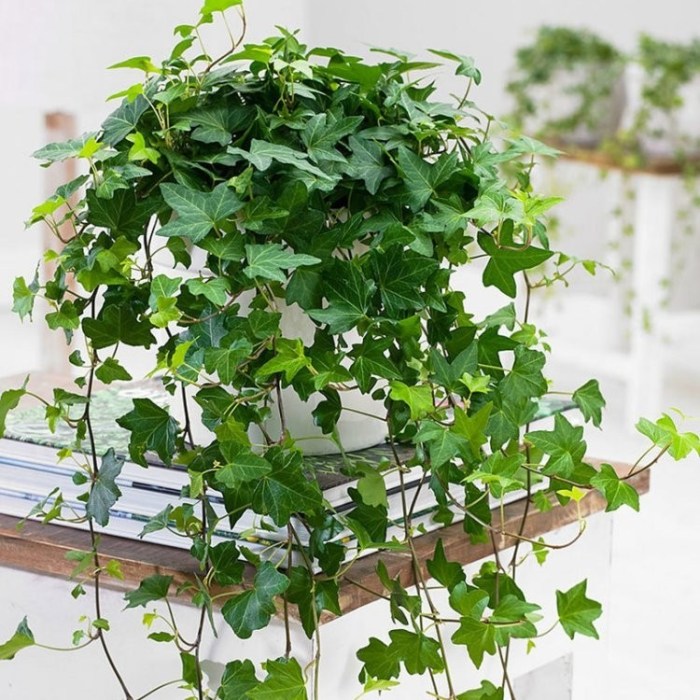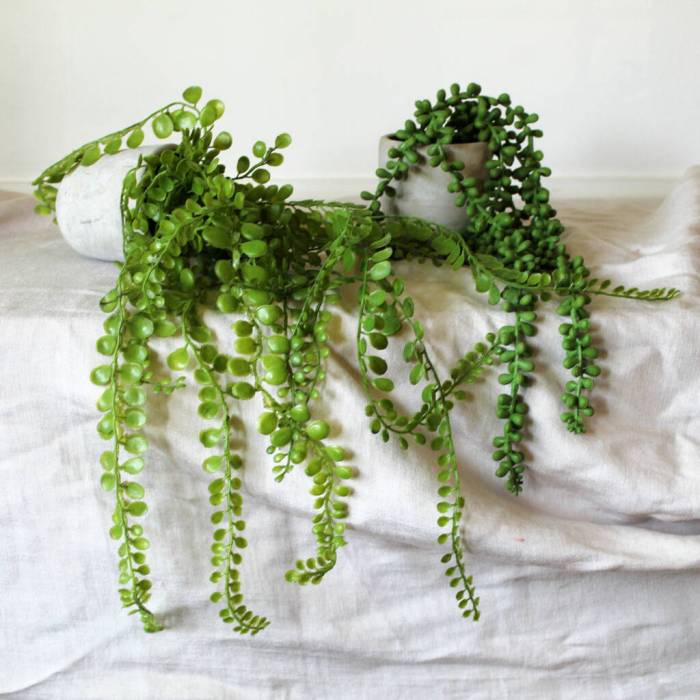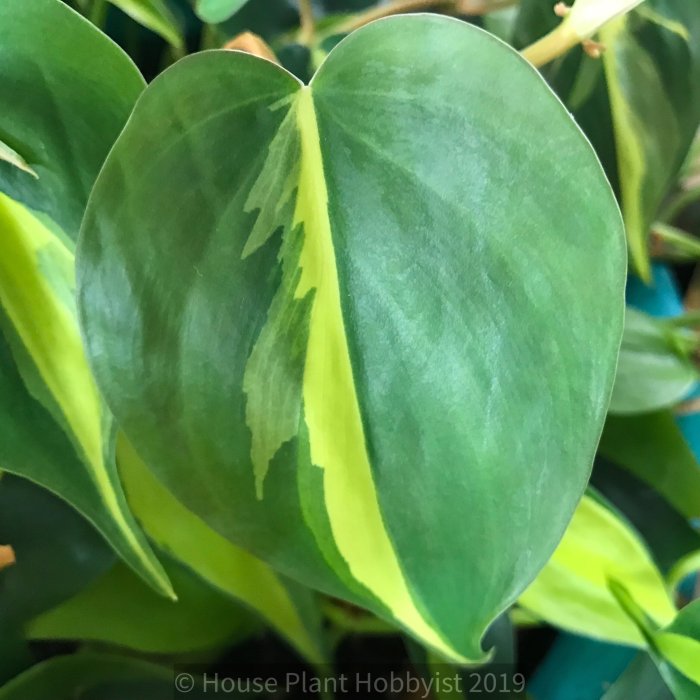Green trailing plants are captivating additions to any indoor or outdoor space, offering a cascade of verdant beauty and a host of practical benefits. From purifying the air to reducing stress, these versatile plants add life and vitality to any environment.
Their unique growth habit, with long, trailing stems adorned with lush foliage, makes them ideal for hanging baskets, windowsills, and vertical gardens. They create a sense of movement and depth, drawing the eye upward and adding a touch of elegance to any room.
Types of Green Trailing Plants
Green trailing plants, characterized by their graceful, cascading growth habit, add a touch of elegance and natural charm to any space. These versatile plants come in a wide range of species, each with its own unique characteristics and growing requirements.
Common Green Trailing Plant Species
- Pothos (Epipremnum aureum): A popular choice for indoor spaces, pothos is known for its trailing vines and heart-shaped leaves. It is tolerant of low light and infrequent watering, making it an ideal plant for beginners.
- Philodendron scandens: Also known as the heartleaf philodendron, this species features glossy, heart-shaped leaves. It thrives in bright, indirect light and prefers moist soil.
- Spider Plant (Chlorophytum comosum): Known for its arching stems and grass-like foliage, the spider plant is a low-maintenance option. It produces small, white flowers and offsets that can be easily propagated.
- String of Hearts (Ceropegia woodii): This trailing succulent has heart-shaped leaves with a distinctive silver-green pattern. It requires bright, indirect light and well-draining soil.
- Burro’s Tail (Sedum morganianum): A succulent with cascading stems and plump, cylindrical leaves, burro’s tail is a popular choice for hanging baskets. It prefers bright, indirect light and infrequent watering.
Growth Habits and Growing Conditions
Green trailing plants generally have fast-growing, vine-like stems that cascade over surfaces or hang from baskets. They are typically easy to care for, preferring bright, indirect light and moist but well-draining soil. Most species are tolerant of occasional neglect and can thrive in a variety of indoor environments.
Benefits of Growing Green Trailing Plants
Incorporating green trailing plants into indoor and outdoor spaces offers a myriad of benefits that enhance both the aesthetic appeal and well-being of the environment.
These plants, with their cascading foliage, not only add a touch of elegance and tranquility to any space but also contribute to improved air quality and reduced stress levels.
Aesthetic Appeal
Green trailing plants, with their graceful vines and lush foliage, create a visually stunning effect that transforms any space into an oasis of greenery.
Green trailing plants are a popular choice for hanging baskets and other containers. They can add a touch of greenery and life to any room. For those looking for the best trailing plants, there are many options to choose from.
Best trailing plants include ivy, pothos, and spider plants. These plants are all easy to care for and can tolerate a variety of conditions. Green trailing plants can add a touch of beauty and elegance to any home.
They can be used to soften harsh edges, add depth and dimension to a room, and create a sense of privacy by forming a natural screen.
Whether suspended from hanging baskets, cascading down windowsills, or adorning vertical gardens, trailing plants bring a touch of the outdoors indoors, creating a serene and inviting atmosphere.
Air-Purifying Qualities
Many green trailing plants possess the remarkable ability to purify the air by removing harmful toxins and pollutants.
Studies have shown that plants like the spider plant, peace lily, and golden pothos can effectively reduce levels of formaldehyde, benzene, and other volatile organic compounds (VOCs) that can cause respiratory problems and other health issues.
By incorporating these plants into your living or work space, you can improve indoor air quality, creating a healthier and more comfortable environment.
Stress Reduction
The presence of green trailing plants has been linked to reduced stress levels and improved mood.
The calming effect of greenery has been attributed to its ability to evoke feelings of tranquility and connection to nature.
Studies have shown that exposure to plants can lower blood pressure, decrease anxiety, and improve overall well-being.
Care and Maintenance of Green Trailing Plants
Green trailing plants are relatively low-maintenance, but like all plants, they have specific needs to thrive. Providing optimal conditions for lighting, watering, and soil type will ensure healthy growth and lush foliage. Regular pruning, fertilizing, and pest control will also contribute to their overall well-being.
Lighting Requirements
Most green trailing plants prefer bright, indirect light. They can tolerate low light conditions, but their growth may be stunted, and their leaves may lose their vibrant color. Avoid placing them in direct sunlight, as this can scorch their leaves.
Watering Schedule
Water green trailing plants when the top inch of soil feels dry to the touch. Allow the excess water to drain out of the drainage holes in the pot. Avoid overwatering, as this can lead to root rot.
Soil Type
Green trailing plants prefer well-draining soil. A mixture of potting soil, perlite, and peat moss is ideal. You can also add a slow-release fertilizer to the soil to provide nutrients over time.
Pruning
Regular pruning will encourage new growth and keep your green trailing plants looking their best. Use sharp, clean shears to remove any dead or damaged leaves or stems. You can also pinch back the tips of the stems to promote bushier growth.
Fertilizing
Fertilize green trailing plants every few weeks during the growing season with a balanced liquid fertilizer. Follow the instructions on the fertilizer label carefully.
Pest and Disease Control
Green trailing plants are susceptible to a few common pests and diseases, including mealybugs, aphids, and spider mites. You can control these pests by using insecticidal soap or neem oil. You can also prevent diseases by ensuring your plants have good air circulation and by avoiding overwatering.
Creative Uses of Green Trailing Plants

Incorporate green trailing plants into your home decor and landscaping for a touch of natural beauty and creativity. These versatile plants offer endless possibilities, from living walls to outdoor ground covers.
Living Walls
Transform bare walls into lush vertical gardens with green trailing plants. Use hanging planters or trellises to create a living tapestry that purifies the air and adds a touch of greenery to any space.
Green trailing plants are a beautiful and easy way to add life to any room. They can be hung from the ceiling, placed on a shelf, or even used as a table centerpiece. However, these plants need plenty of light to thrive, especially if they are grown indoors.
A hanging grow light is a great way to provide your green trailing plants with the light they need to stay healthy and vibrant.
Table Centerpieces
Create eye-catching table centerpieces by arranging trailing plants in vases or baskets. Their cascading foliage will add a touch of elegance and freshness to your dining or living room.
Outdoor Ground Covers
Cover bare spots in your garden with trailing plants. They quickly spread to create a lush carpet of greenery that suppresses weeds and adds visual interest to your outdoor space.
Comparison of Green Trailing Plants to Other Types of Houseplants

Green trailing plants stand out among houseplants for their unique aesthetic appeal and adaptability. However, they differ from other popular categories in terms of care requirements, growth habits, and suitability for various growing environments and styles.
Let’s explore the similarities and differences between green trailing plants and other houseplant categories, such as succulents, ferns, and flowering plants.
Succulents
Similarities:
- Low maintenance: Both green trailing plants and succulents require minimal care, making them suitable for busy individuals or those new to plant care.
- Drought tolerance: They can withstand periods of neglect and infrequent watering, making them ideal for forgetful plant owners.
Differences:
- Water needs: Succulents store water in their thick, fleshy leaves and stems, allowing them to tolerate extended dry spells. Green trailing plants, on the other hand, have thinner foliage and require more frequent watering.
- Growth habit: Succulents typically form compact rosettes or clusters, while green trailing plants have long, trailing stems that cascade over surfaces.
Ferns, Green trailing plants
Similarities:
- Indirect light preference: Both green trailing plants and ferns prefer bright, indirect light, making them suitable for rooms with north-facing windows or filtered sunlight.
- Humidity requirements: They thrive in humid environments and may benefit from misting or placing on a humidity tray.
Differences:
- Water needs: Ferns require consistently moist soil, while green trailing plants can tolerate slightly drier conditions.
- Growth habit: Ferns typically have upright fronds, while green trailing plants have trailing stems with cascading foliage.
Flowering Plants
Similarities:
- Aesthetic appeal: Both green trailing plants and flowering plants can add beauty and color to indoor spaces.
- Light requirements: Many flowering plants and green trailing plants prefer bright, indirect light.
Differences:
- Blooming: Flowering plants produce blooms, while green trailing plants primarily provide foliage interest.
- Care requirements: Flowering plants generally require more attention, including regular watering, fertilizing, and pruning, compared to low-maintenance green trailing plants.
Final Conclusion

Whether you’re seeking to enhance your indoor air quality, create a living wall, or simply add a touch of greenery to your home, green trailing plants offer a wealth of options. Their versatility, ease of care, and aesthetic appeal make them a perfect choice for plant enthusiasts of all levels.
Popular Questions
What are the different types of green trailing plants?
There are numerous species of green trailing plants, including pothos, philodendron, spider plants, and ivy.
What are the benefits of growing green trailing plants?
Green trailing plants offer air purification, stress reduction, and aesthetic enhancement.
How do I care for green trailing plants?
Green trailing plants prefer bright indirect light, well-draining soil, and moderate watering.